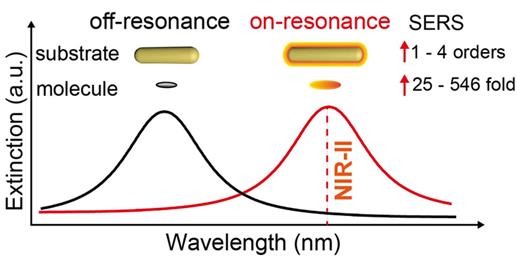 |
Our work on NIR-II SERS nanotags being published on the Journal of Physical Chemistry C
Surface-enhanced Raman scattering (SERS) nanoprobes have attracted extensive attention in the field of bioimaging due to their high sensitivity and intrinsic fingerprint spectrum. In the near-infrared band, especially in the second near-infrared window (i.e., 1000 nm-1700 nm, NIR-II), biological tissues have lower absorption, scattering and autofluorescence, so the optical imaging of NIR-II can achieve higher Spatial resolution and deeper tissue penetration. However, there are few reports of highly sensitive NIR-II SERS nanoprobes. Therefore, the design of SERS nanoprobes in the NIR-II window is highly desirable. he resonant strategy, i.e., the use of resonant substrates and resonant molecules, can be helpful in fabricating bright SERS nanotags at the NIR-IIwindow; however, this strategy has not been demonstrated with the lack of quantitative assessments.
We quantitatively studied the application of resonance strategy in the design of NIR-II SERS probes.By comparing the resonant and non-resonant SERS substrates,it is confirmed that the enhancement factor of the resonant SERS substrate is 1-4 orders of magnitude higher than that of the non-resonant SERS substrate. When using the resonant Raman reporter molecules, SERS intensities can be further increased by 25-546 times. This work demonstrates the potential of the resonant strategy in fabricating ultrasensitive NIR-II SERS nanotags and provides insights into the design of related plasmonic devices.
The work has recently published on the Journal of Physical Chemistry C intitled as “Resonant Strategy in Designing NIR-II SERS Nanotags: A Quantitative Study”. The first author is Haoqi He, a master student in our group; and the corresponding authors are Prof. Li Lin and Prof. Jian Ye.
Full text link: https://pubs.acs.org/doi/10.1021/acs.jpcc.2c02512
 Figure 1. Schematic diagram of the NIR-II resonance strategy
Figure 1. Schematic diagram of the NIR-II resonance strategy